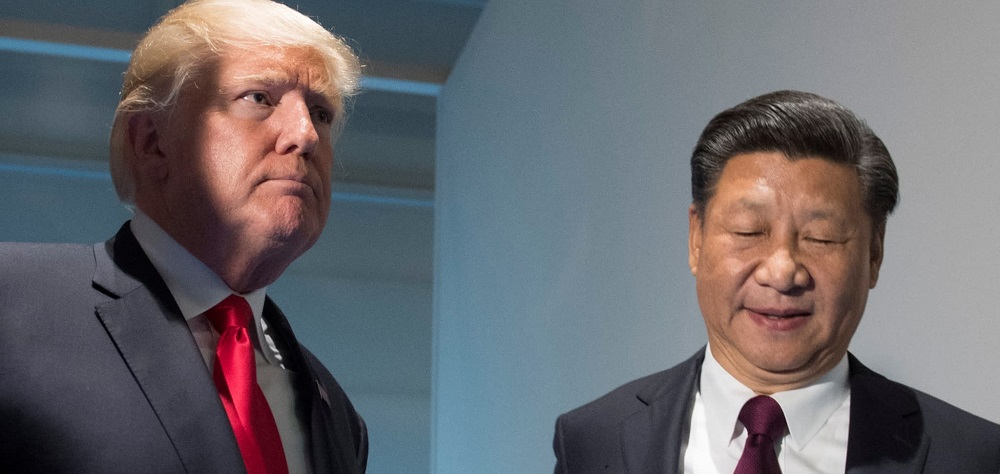Alwaght- In mid-January, the US and China signed the phase one of a so-called “historic” trade deal, setting a truce in a trade war that lasted for nearly three years.
As Trump after the agreement promised a visit to Beijing to meet the Chinese leader Xi Jinping, nobody saw on the horizon new tensions between the two economic powers, at least in the short term.
However, five months after the commercial battle ceasefire, the two countries are observing growing tensions this time on Taiwan, with the situation developing to an extent that fears of a direct military clash have increased, throwing the future of the peninsula in further vagueness.
Taiwan cause
When Donald Trump assumed the presidency at the White House in 2017 and challenged the “one China” policy which suggests that Taiwan is part of the mainland China, President Xi at the 19th congress of the ruling Communist Party proposed “one state, two systems” for reunion with Taiwan. According to the proposal, China should reach this aim by 2050 as it rises to become a modern-day socialist power.
Taiwan has repeatedly rejected the idea, with Taiwanese President Tsai Ing-wen saying that the suggestion is a “failed model” adopted in relations with Hong Kong.
On the other side, in mid-April, the US withdrew its strategic long-range B-2 bombers from its pacific territory Guam Island and is reviewing its military makeup in the vicinity of China. Many analysts agree that such tactical change is meant to promote the readiness for a military confrontation with China with the centrality of Taiwan.
China is aware of this and in the past two months held four naval drills in the Strait of Taiwan, unprecedented in their kind. According to Daily Mail report published on Monday, China is reportedly sending its two new aircraft carriers into war games near the Pratas Islands, playing into fears that a Taiwan invasion could be next as tensions with the US continue to worsen. The British news website added that the aircraft carriers Liaoning and Shandong are currently in Bohai Bay in the Yellow Sea on a combat readiness mission before the massive ships head into the war games.
Factors intensifying the tensions
Taiwan is exposed to risk of a military confrontation with China. Last year, Taiwan called on the US to send military experts and trainers to train its military personnel and promote its defense infrastructure amid increasing Chinese threats. A couple of months later, the US Secretary of Army Ryan McCarthy told Bloomberg that the US military seeks to deploy a special force to the Pacific with the main mission of gathering cyber and missile intelligence about China. One of the locations of the deployment of this force is Taiwan which would be equipped by the US with long-range weaponry and hypersonic missiles to destroy sea and ground targets.
Before the Taiwan-related tensions, the verbal clashes of Washington with Beijing was focused on the “unfair” trade between the two countries. However, after the recent tensions, the talk is about possible military confrontation. Last month, Chad Sbragia, the Deputy Assistant Secretary of Defense for China said that the risk of a military clash with Beijing is strongly possible.
It was Chinese pressure that froze Taiwan out of the UN. Currently, only 15 countries have official relations with Taiwan. On March 20, the Congress approved the Taiwan Allies International Protection and Enhancement Initiative (TAIPEI). Trump signed it into law shortly later, encouraging other countries to expand relations with Taiwan. Such a policy has been unprecedented in American foreign policy over the past three decades, making Beijing react. In early May, the two powers clashed at the UN over Taiwan.
The coronavirus pandemic and the US officials dubbing it “Chinese virus” and “Wuhan virus” aroused the ire of the Chinese officials. Recently, Trump urged China to “compensate” for what he called Beijing’s cover-up over the COVID-19 outbreak.
Amid the tensions, the Pentagon has recently greenlighted sales of torpedoes and other weapons to Taiwan worth $180 million. On Sunday, Wu Qian, spokesperson for the Ministry of National Defense, said that the arms sales to Taiwan violate the One China principle and the terms of three agreements between the US and China and represent meddling in the Chinese internal affairs.
Additionally, the US government has slapped sanctions on 33 Chinese companies and institutions, putting them on two so-called entity lists as it dials up the hostility during the lowest point in US-China relations in decades.
Two dozen government institutions and Chinese companies, including the software giant Qihoo 360 Technology, were placed on the first list for “supporting the procurement of items for military end-use in China.
The Institute of Forensic Science under the Chinese Ministry of Public Security and eight companies were added to a second list with restricted access to US technology because they are “complicit in human rights violations and abuses … against Uygurs, ethnic Kazakhs, and other members of Muslim minority groups in the Xinjiang Uygur Autonomous Region,” according to a second statement by the Commerce Department’s Bureau of Industry and Security. The sanctions are apparently aimed to stir protests and riots inside China.
The central point of the two countries’ tensions remains the Taiwan cause, however. Because when it comes to the Uyghur minority and Hong Kong, it is people and the identity but when it comes to Taiwan, in addition to the identity issues, there is a government that can stand by the US to help contain China.
But the Taiwanese political system has fundamental differences with the political system in mainland China. Now the Chinese political elites translate the American threat as the highest military confrontation level warning. Such understanding of the threat is accompanied by the coronavirus pandemic issue. After the outbreak, anti-Chinese sentiments built up and the US can exploit this to justify to the world a military clash with the Asian power.
Recently, Reuters has reported on a document in which the ministry of state security told President Xi about the intensification of anti-Chinese sentiments worldwide due to the coronavirus outbreak. The document says that the continuation of this situation will overshadow the Beijing-Washington ties, with the outcome being possibly military confrontation.



























